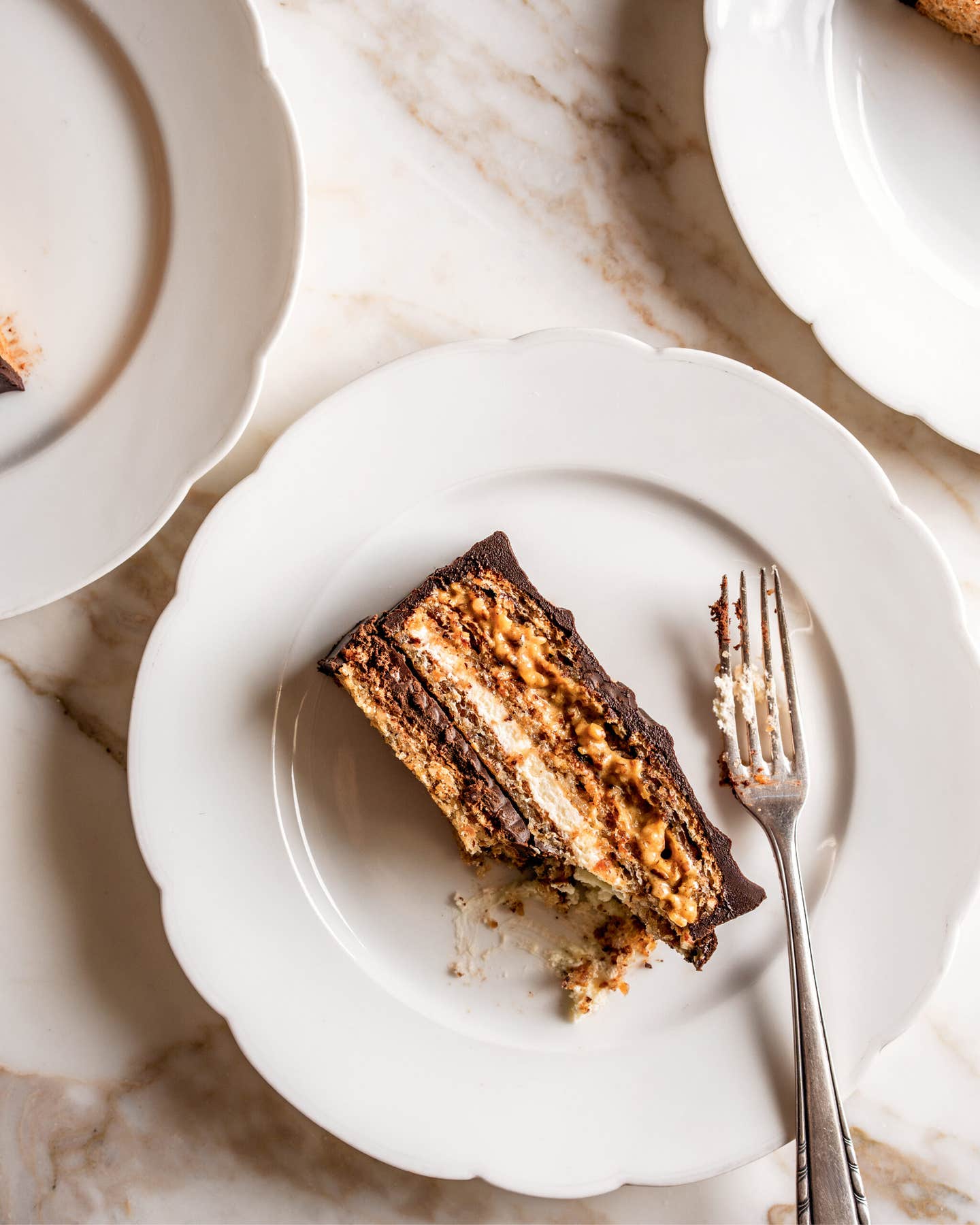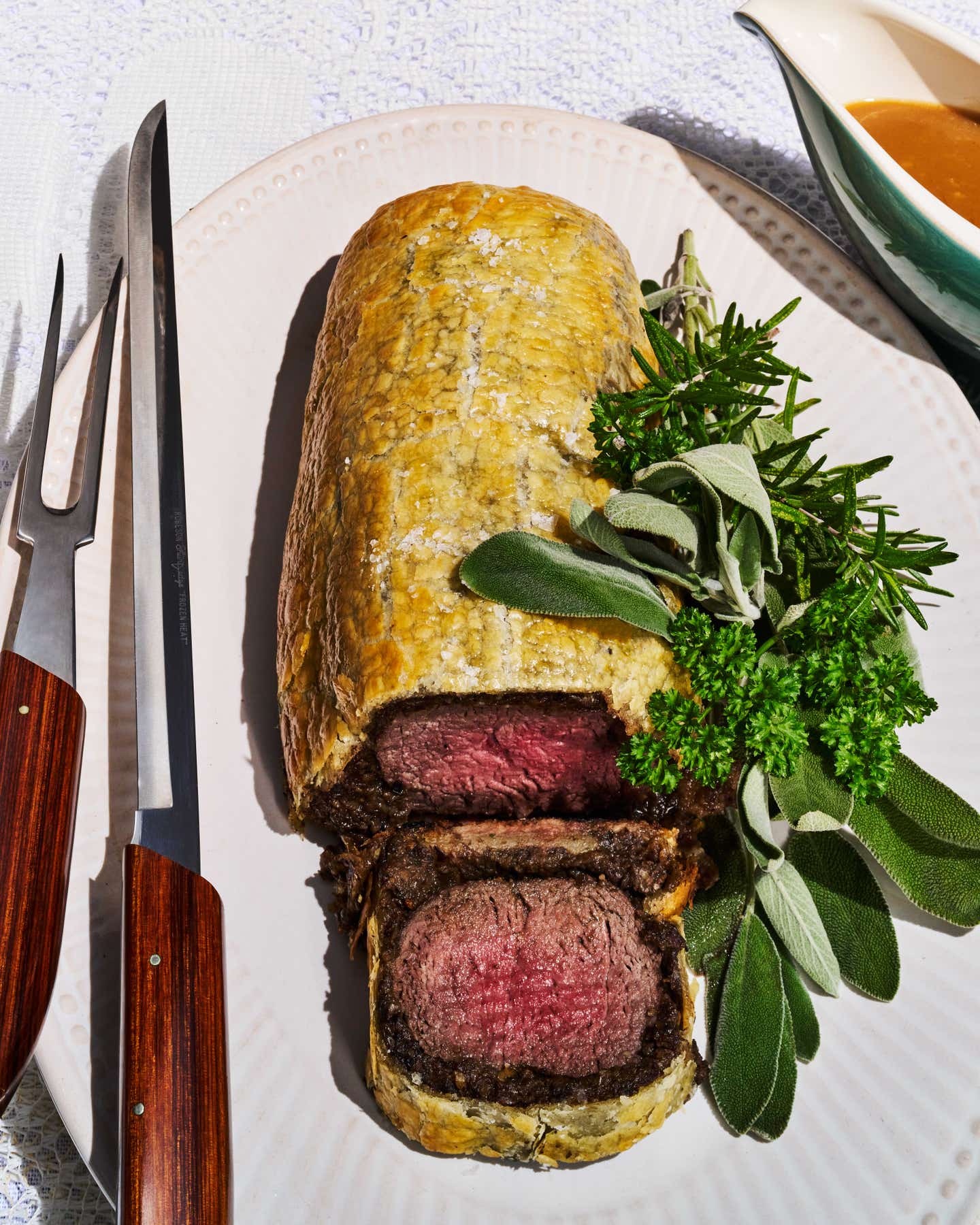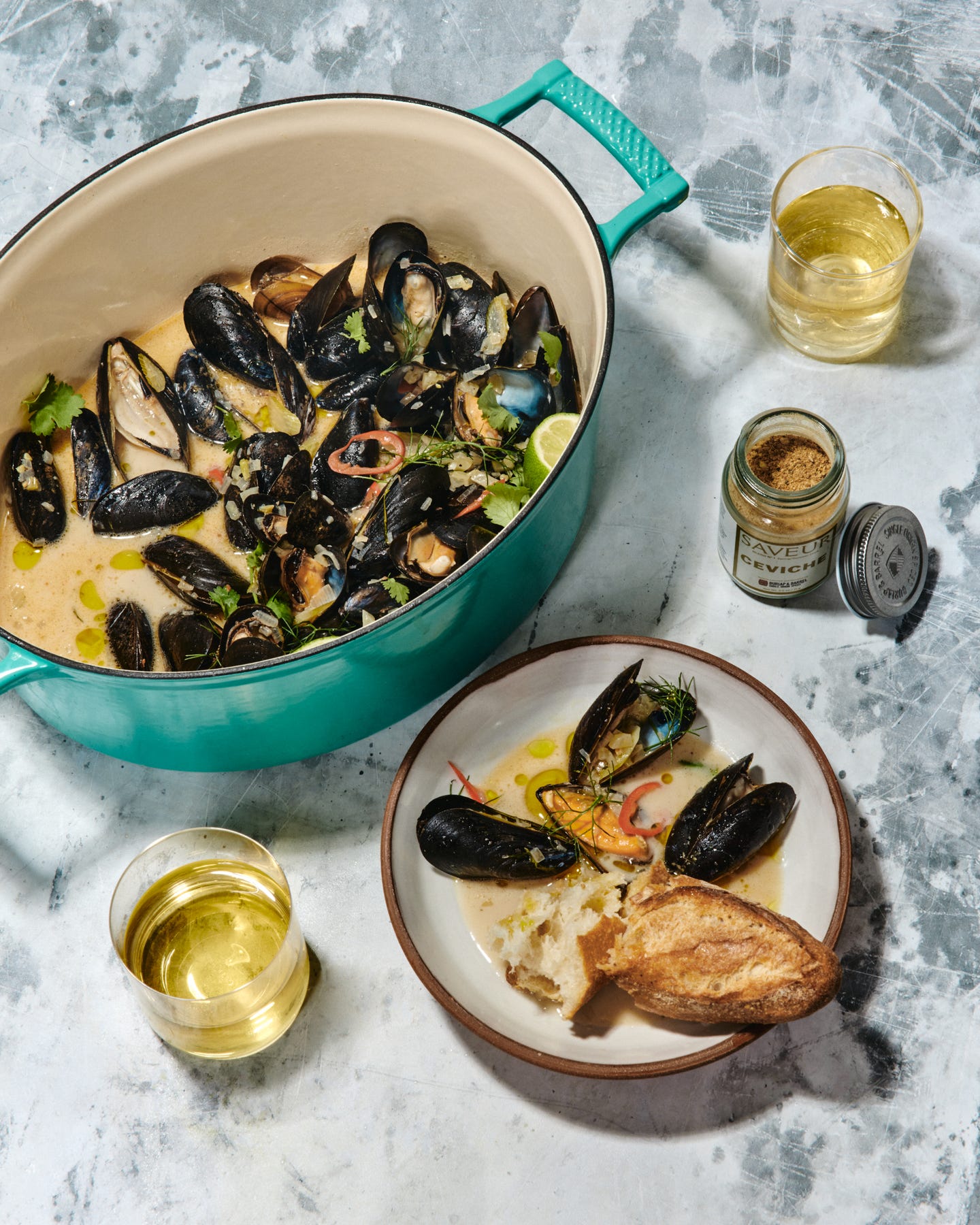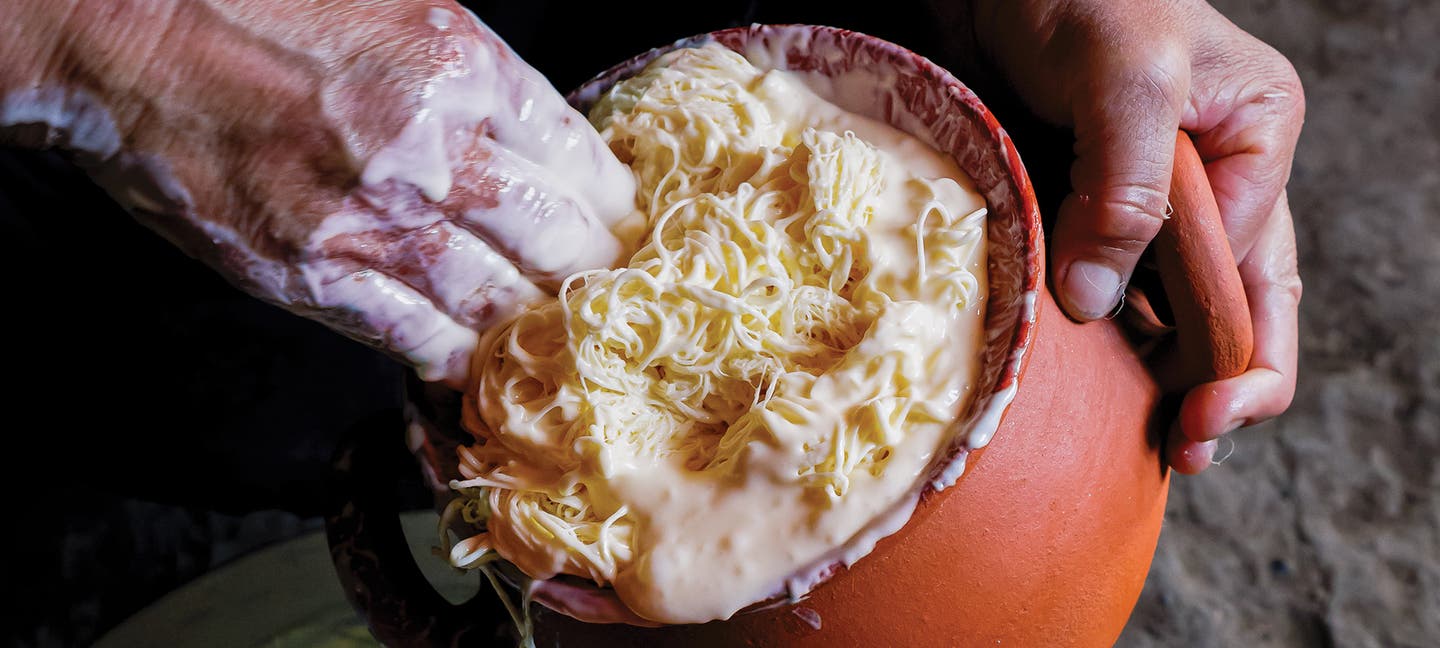
The Lost Cheeses of Georgia
In the villages and remote valleys of this mountainous country, traditional cheesemaking endures
Zurab Chkadua was acting as the tamada, the toastmaster, for a traditional Georgian supra at his house in Lakhamula village in the Svaneti region of northwestern Georgia. The job is sort of like being both a pastor and a quarterback for a dinner party. He had just instructed us to raise our glasses and give thanks. "To our guests at the table," he said, as we downed ample portions of amber wine in a single go. "We must also be grateful for this treasure God has given us." He meant the cheese, which his wife, Ira Ansiani, makes in her kitchen, about 10 feet from where we were sitting.
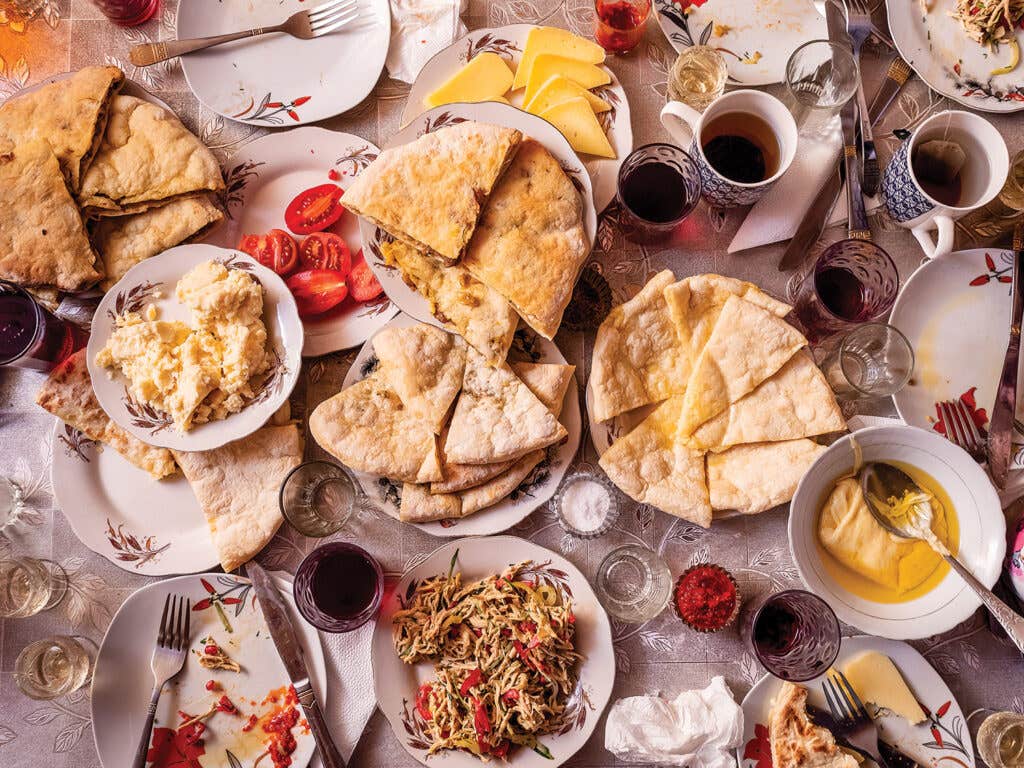
Calling cheese a God-given treasure did not feel even a little bit like hyperbole because this wasn't any ordinary cheese. Narchvi is a rich, creamy cow's-milk variety with a deeply funky aroma, buttery texture, sweet initial flavor, and lingering saline quality. It's aged in wooden boxes for up to a year, by which time it takes on a sharp, nutty flavor. Ansiani might be the only person in the country who still makes it.
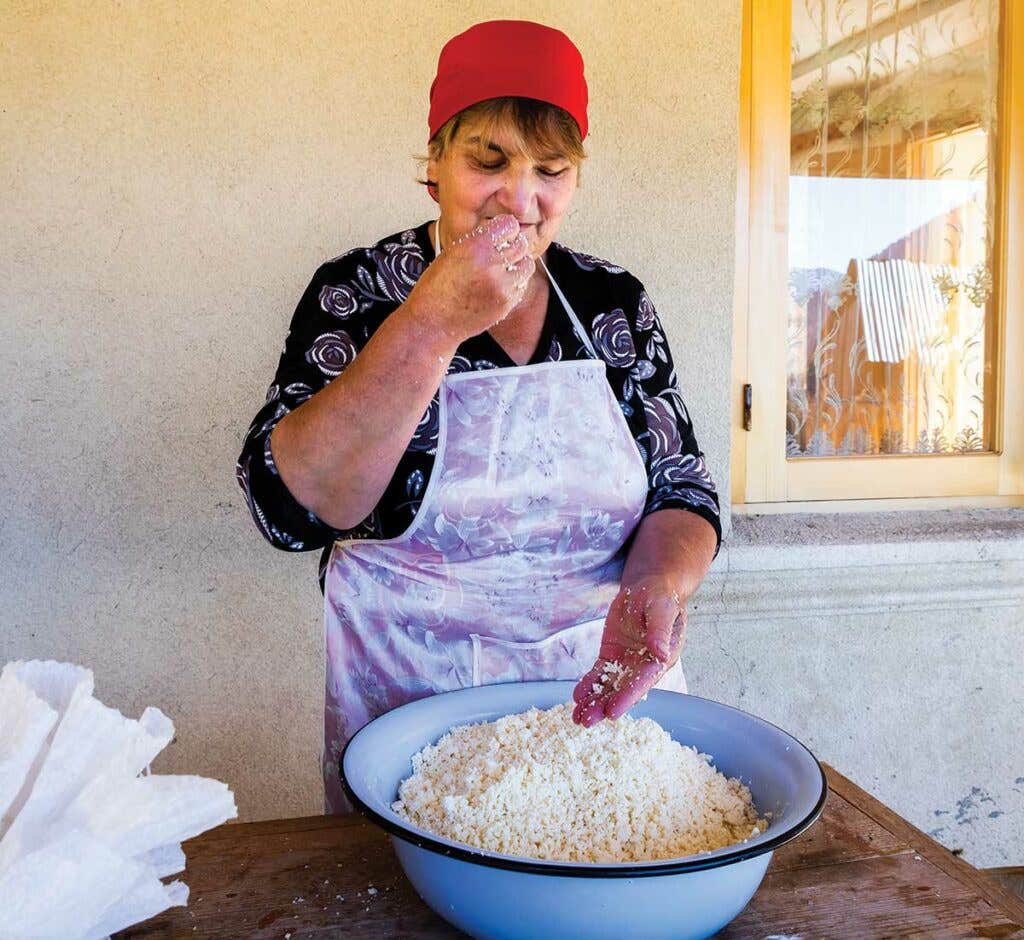
She had used it to prepare two pizza-size khachapuri, cheese-filled breads that are a staple of Georgian cuisine. One, which had a satisfying sour intensity, featured year-old narchvi. The other had fresher narchvi spiked with hemp seeds, another half-forgotten tradition in this corner of the country, which gave the khachapuri a lovely crunch.
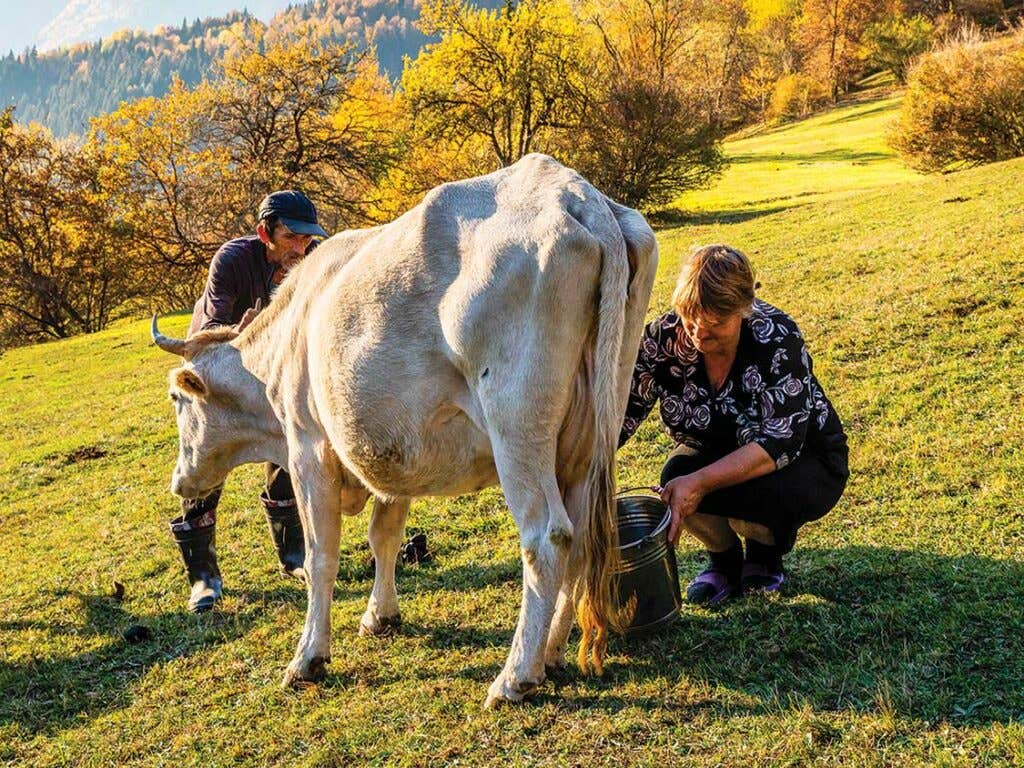
Lakhamula was the last stop on my weeklong tour around the country with Ana Mikadze-Chikvaidze, who is known in local food circles as the "mother of Georgian cheese." Until recently, Georgians had recognized only four "traditional" styles of cheese: semisoft sulguni, briny imeruli, guda (completely unrelated, confusingly, to Dutch Gouda), and karkhunli, which translates to "factory cheese." To a foreigner, the names might sound exotic, but imagine living in a world in which we had access only to Colby, American, Swiss, and provolone.
In the past few years, though, Mikadze-Chikvaidze has helped introduce the people of her country to their lost cheese heritage, uncovering traditions that have been practiced in isolated mountain villages for generations, and bringing them to the masses. I had met Mikadze-Chikvaidze at a winery here in Georgia a few months earlier, where she told me about her mission and invited me to join her on a visit to some of these village cheesemakers. “Come,” she said that day at the winery, waving her hand as if we were going to go just then. “I will give you a preview of what people will someday see: that Georgia is a great cheesemaking country.”
Four months later, we were driving out of Tbilisi, the capital. Georgia is wedged in the Caucasus Mountains between Turkey, Azerbaijan, Armenia, and Russia, and our destination was Andriatsminda, a Georgian village about 12 miles from the Turkish border. After three hours of driving, we turned off the main road and onto a steep, bumpy dirt path to the village, a jumble of rickety wooden houses clinging to the top of a mountain.
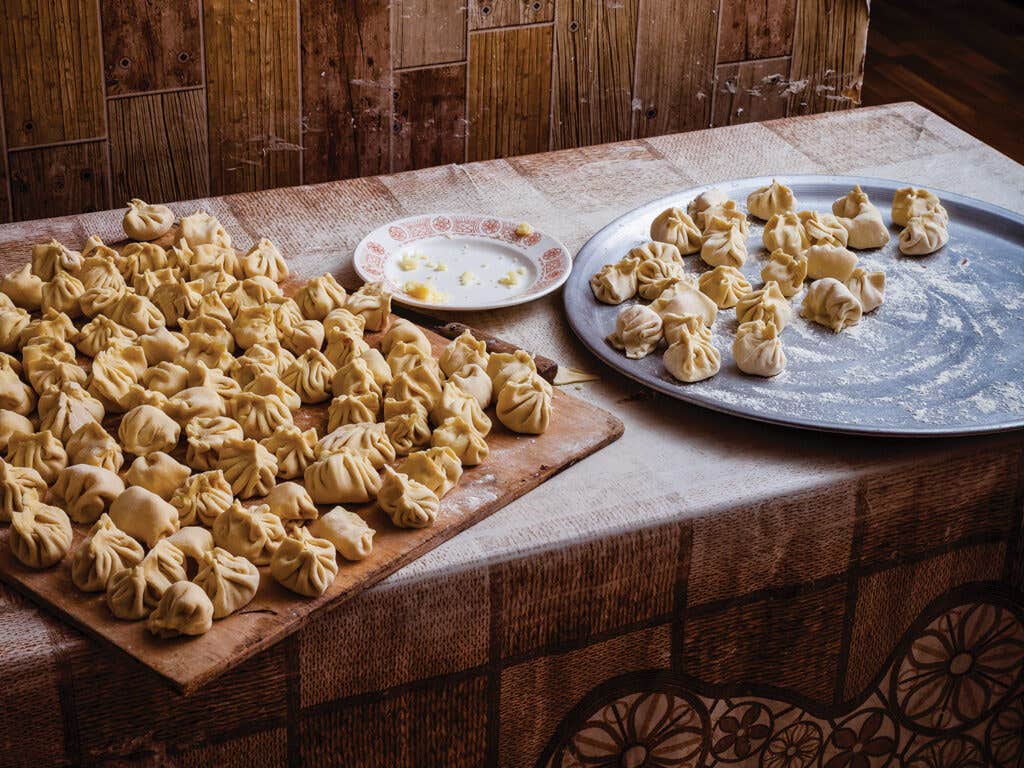
Cheesemaker Galina Inasaridze ushered us into her house. She had been busy folding cheese into khinkali—doughy, golf-ball-size dumplings. I stole a piece from her assembly line. It had the texture of aged parmigiano, complete with crunchy crystals but with a flavor reminiscent of a sharp cheddar. "This one is pashvis nagbiani kveli," Mikadze-Chikvaidze said. It was a cow's-milk cheese that had been aged for three months in the stomach of a goat. Khinkali are usually meat-filled, but hers had only cheese with an irresistibly creamy texture.
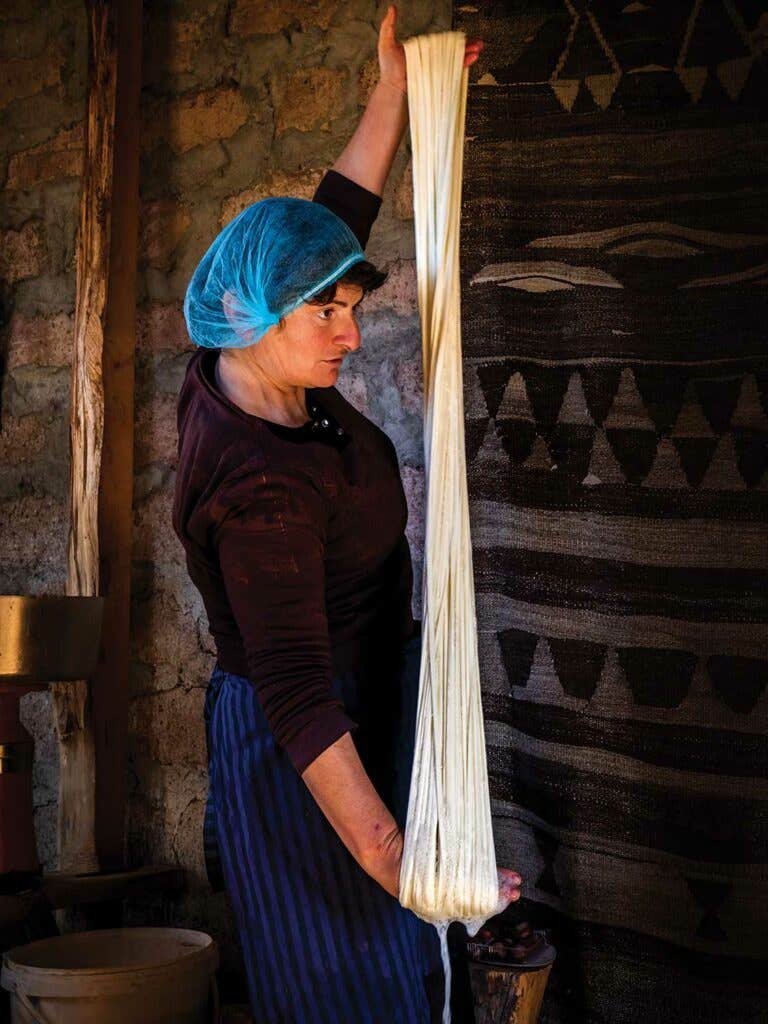
While this particular cheese is rare in Georgia, it wasn't even the main reason Mikadze-Chikvaidze had brought me there. An hour later, we walked through the ramshackle village to Inasaridze's nearby farm to watch the laborious process of making a cheese called tenili. After separating the curds from the whey, she and her neighbors warmed the curds over a fire until they congealed into a pliable mass. At this point, one of the women began moving the cheese around her hands with a confident pedaling motion, flipping the thick ribbon in a spinning loop. She pulled and stretched. She spun and spun as the loop got bigger and thinner. After about seven minutes of stretching and pedaling, she dunked the whole thing in cold water, and it separated into little 3-foot-long strings reminiscent of thick bucatini noodles. She hung the strings of cheese across a horizontal wooden beam, where they would rest until the next day, when she would dip them in heavy cream and stuff them into a small clay pot. At this point, the cheese would be ready to eat or to age for up to a year.
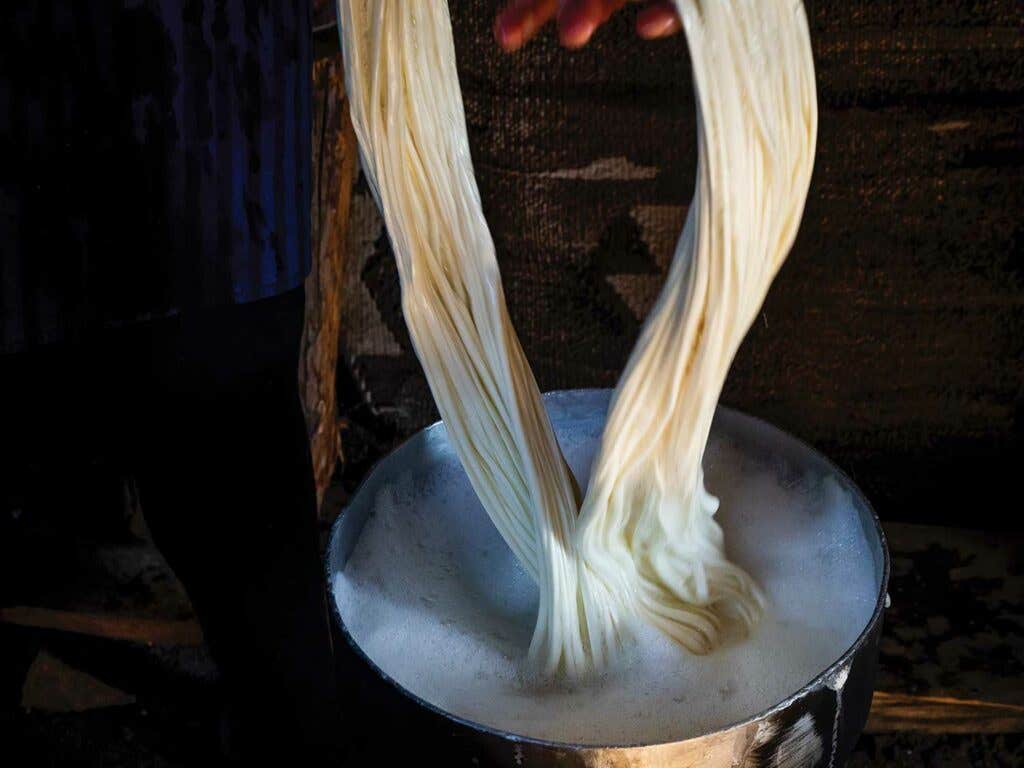
“There is no other cheese like this in world,” Mikadze-Chikvaidze said. “And only Galina and her two neighbors know how to make it.” She then rattled off the names of some restaurants in Tbilisi that had recently begun serving it.
Inasaridze told me that the remote location of her village was the only reason tenili existed at all. “The Turks occupied this region for centuries. They erased some aspects of our culture, but they never made it all the way up here,” she said. “So some of our cheeses were able to survive.”
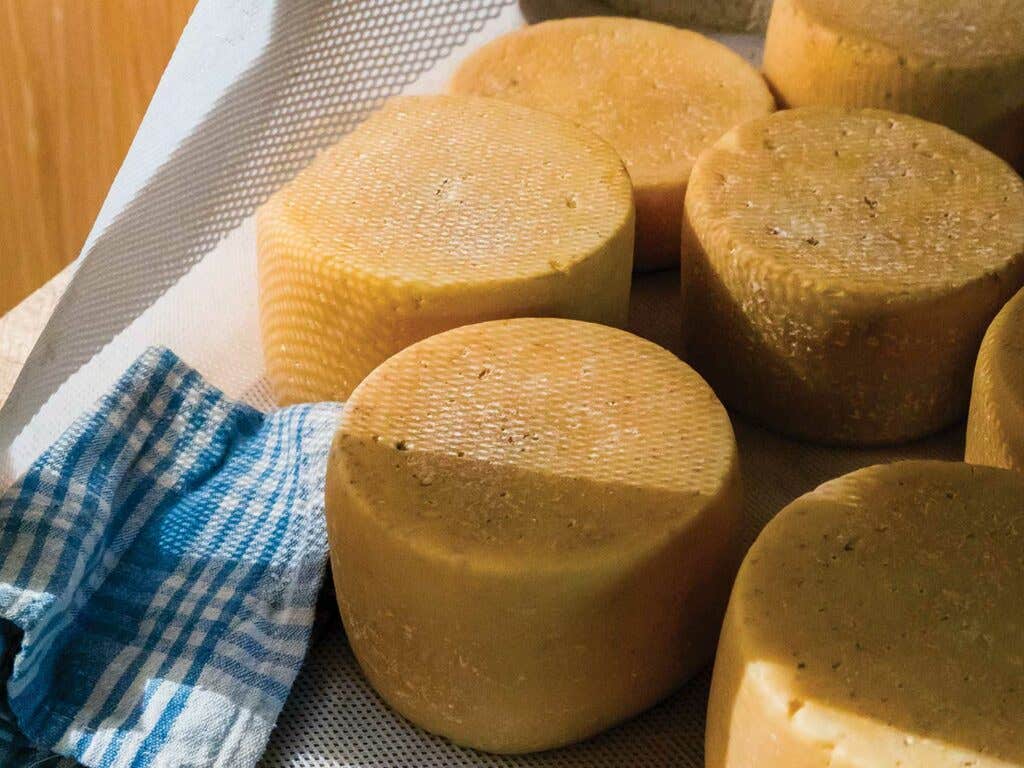
The four-and-half-century Turkish Ottoman Empire fell in 1922, but the Soviets showed up that same year. “The socialist economy didn’t have room for the cheese industry—at least not small-batch, artisanal, aged cheese,” Mikadze-Chikvaidze said. “Sulguni and imeruli were mass-produced and churned out the next day. It was all about feeding the people, not about savoring food. That was considered too bourgeois. In the Soviet period, and a decade or so after, there was the attitude that if it wasn’t for sale at the market, then it didn’t exist. It’s a very Soviet mentality. When I’d turn up in a village and ask about artisanal cheese, they’d stare at me blankly and then point me to the supermarket to get some sulguni or guda. People were afraid of being punished for making something that wasn’t within the system.”
After the fall of the Soviet Union, in 1991, independence came to Georgia. So did a lot of uncertainty, poverty, and corruption—Georgians call that decade the “dark ’90s.” Unexpectedly, around the turn of the millennium, the country’s wine industry took a turn toward the artisanal. Wine, like cheese, had languished under the Soviets, and winemakers continued producing mostly rotgut through the ’90s. But a growing scene of winemakers had returned to the ancient tradition of carefully aging the wine in below-ground clay amphorae. Today, many Georgian bottles are sought after by natural-wine fans around the world—it’s the kind of thing that pops up at Los Angeles grain-bowl places and Parisian neo-bistros.
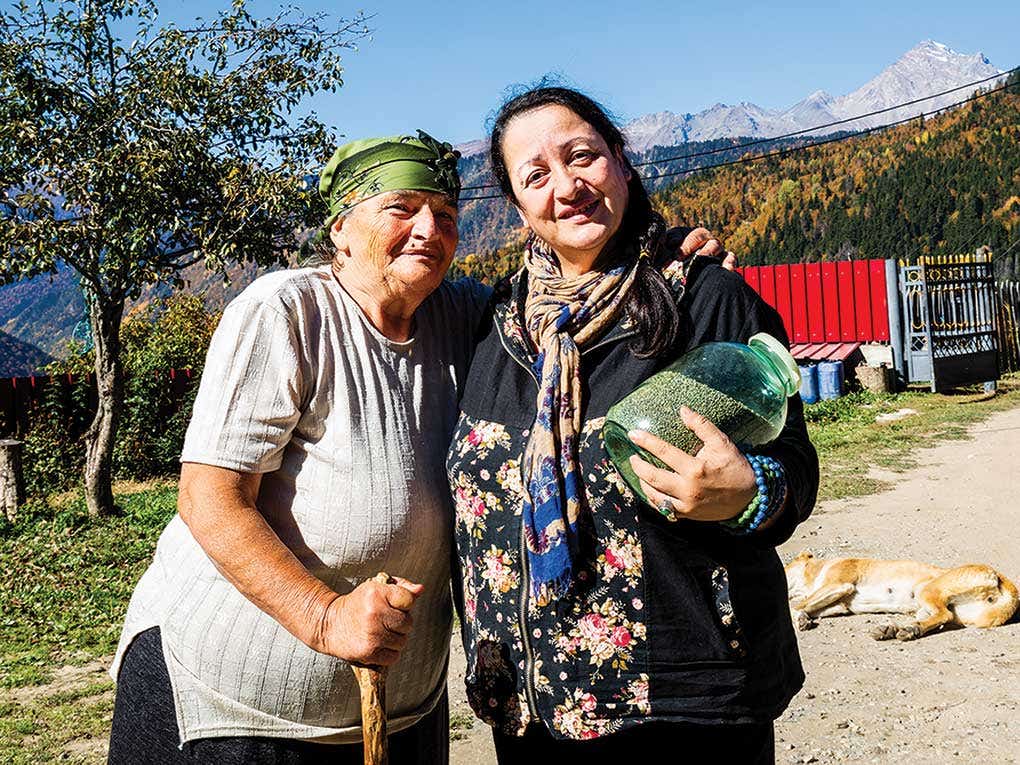
This was the model Mikadze-Chikvaidze had in mind when she founded an annual cheese festival in 2010. One year later, she set up a cheese shop in Tbilisi, the first of its kind in the country, and five years after that, she opened a small workshop outside of town where she produces some of these old-fashioned cheeses herself. Now there are a handful of shops selling handmade cheeses in the capital, and an upscale supermarket chain called Good Will has begun to stock them as well.
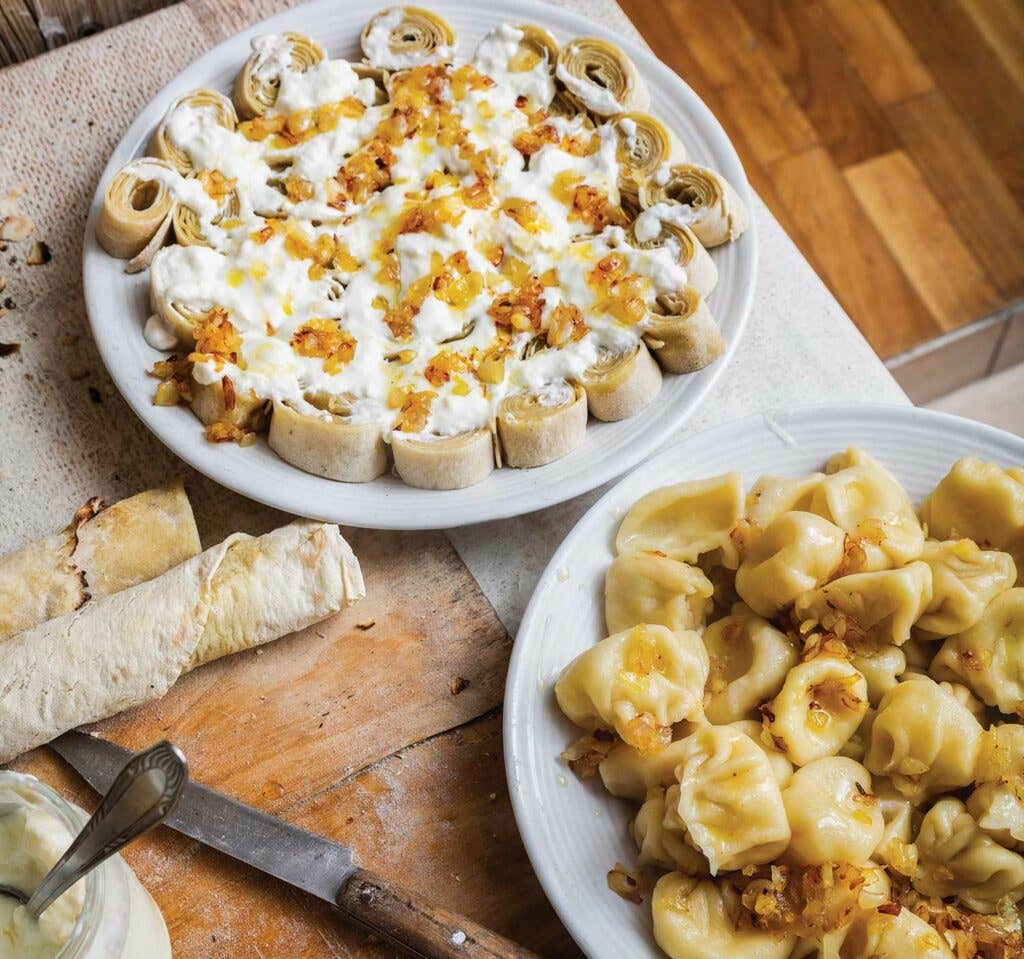
Mikadze-chikvaidze searched for sushvela for seven years—in the wrong place, it turns out. We were rattling down the road in Kartli, a region about two hours south of Tbilisi. "I'd heard about this cheese that was made in the region of Adjara, on the Black Sea coast," she said. "I scoured the entire region for years, turning up in villages and asking if anyone had heard of it. They said I was crazy. But just before I was ready to give up, one guy said to me that my only hope was to find one of the Adjaruli communities that had been relocated after the big 1989 landslide that took out a few villages there." She paused. "So that's this place," pointing to a cluster of two-story detached houses in the middle of the Disveli Plateau.
Here we met Meri Makaharadze, the head of a six-woman cheesemaking co-op called the Disveli Female Cooperation. They make and sell the well-known types such as sulguni, but we were there for their shushvela. Makaharadze's entire village, Tsablana, was destroyed by the 1989 landslide, and the government relocated most of the residents here, about 250 miles east. The people still speak with an Adjaruli accent and eat the regional foods. Case in point: Within moments of entering her home, we were greeted with an Adjaruli-style khachapuri, along with sinori, balls of bread rolled up around cheese and doused in a garlic sauce. They are something not found outside Adjara very often, and these were made with the shushvela.
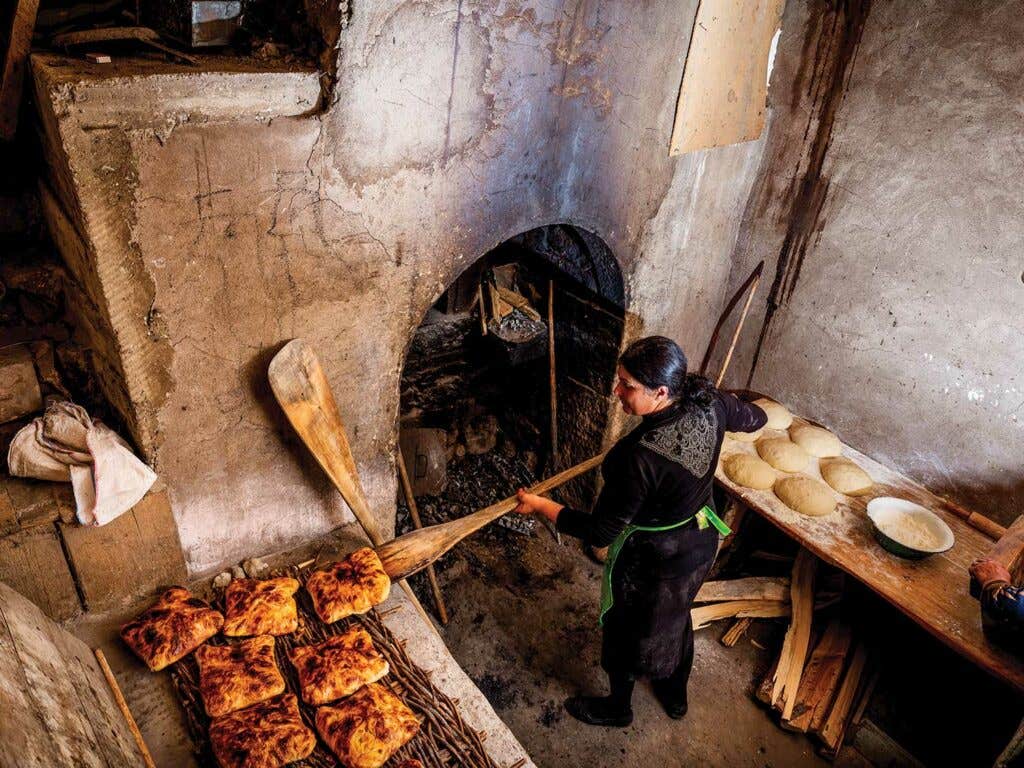
After we ate, Makaharadze waved me into the kitchen to show how shushvela is made. The root of the word is “to stew” in Georgian, and the name became obvious as Makaharadze stirred a plus-size pot over medium heat, adding cornstarch to thicken the creamy mixture. She poured the oozing mixture into vaguely heart-shaped molds, in which the cheese ages for up to a year.
Next, she began cooking something called borano, a traditional dish from Adjara that she makes with the cheese. It's a rich, buttery dip for bread, often eaten in the morning by farmers to help sustain them through the day. She stirred melted butter into the slowly melting cheese in a saucepan. "I've been making this [cheese] for as long as I can remember. Since I was girl," she said. "We never thought anyone would be interested in shushvela, so we just made it for ourselves. Then Ana convinced us to take it to the cheese festival in 2016, and everything began to change."
A few minutes later, we returned to the table, where the borano was waiting for us. I tore off a chunk of bread and plunged it in. The shushvela had the characteristics a wild, aged cheese should: a funky, musty aroma and a deeply rich and creamy texture. I could see how a typical Georgian, used to consuming the four types of mass-produced young cheese all his or her life, might think this akin to tasting cheese for the first time.
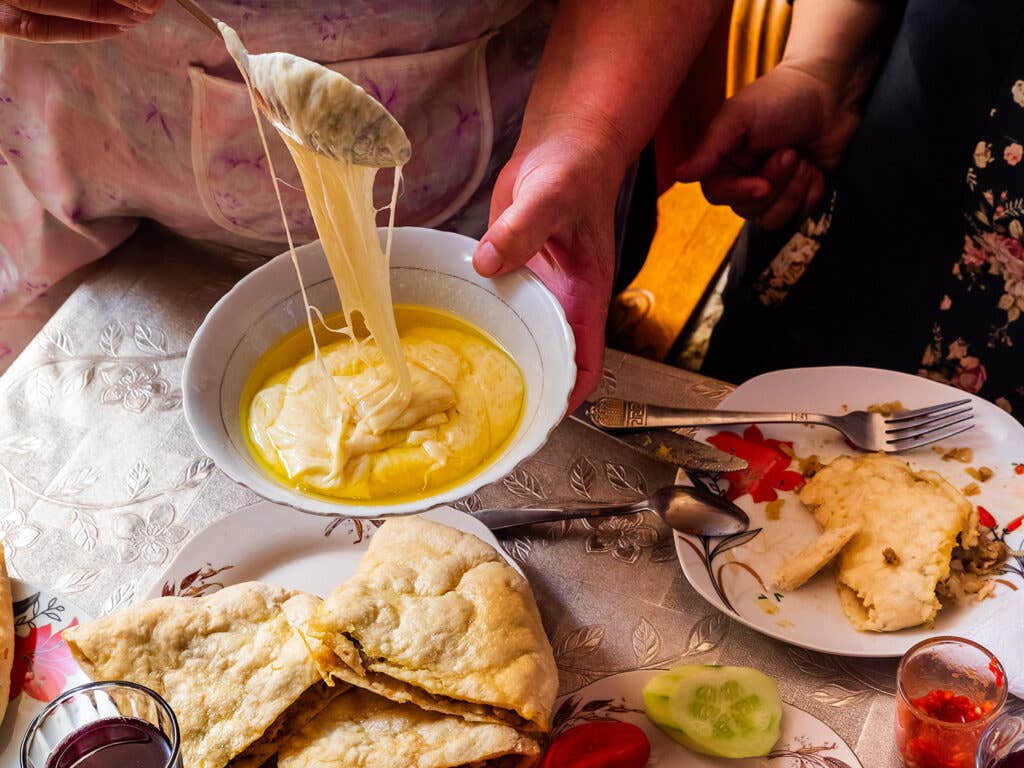
“The thing that baffled me,” Mikadze-Chikvaidze said, “was that Georgia is an ancient agricultural society. One theory is that our name comes from the ancient Greek, Georgios, meaning ‘farmer.’ We have nine regions, and each one has a distinct and rich food and wine culture. But there was no diversity in cheese. It didn’t make sense to me. So that’s what set me off on this quest.”
There is plentiful historical evidence too. In the Georgia National Museum in Tbilisi, display cases exhibit ancient cheesemaking tools from 8,000 years ago. The first evidence of cheesemaking was found in nearby Turkey, so it’s no huge leap to assume the craft also found its way just east of there to what is now Georgia.
A few days later, mikadze-chikvaidze and I sat down at a hip Tbilisi restaurant called Shavi Lomi. The owner, Meri Gubeladze, is a local celebrity chef with a weekly TV show. She was soon sitting at our table presenting a couple of cheese-forward plates. One was a fondue of melted tenili. Fondue is a common dish in the capital, but the complexity of the cheese still comes as a shock to many of her customers. “It’s been challenging to introduce an especially aged, stinky cheese to Georgians,” she said. “[Until recently] we had very safe cheeses. They didn’t smell. They didn’t taste funky. This dish isn’t a bestseller, but I am certain that over time Georgians will come to love it.”
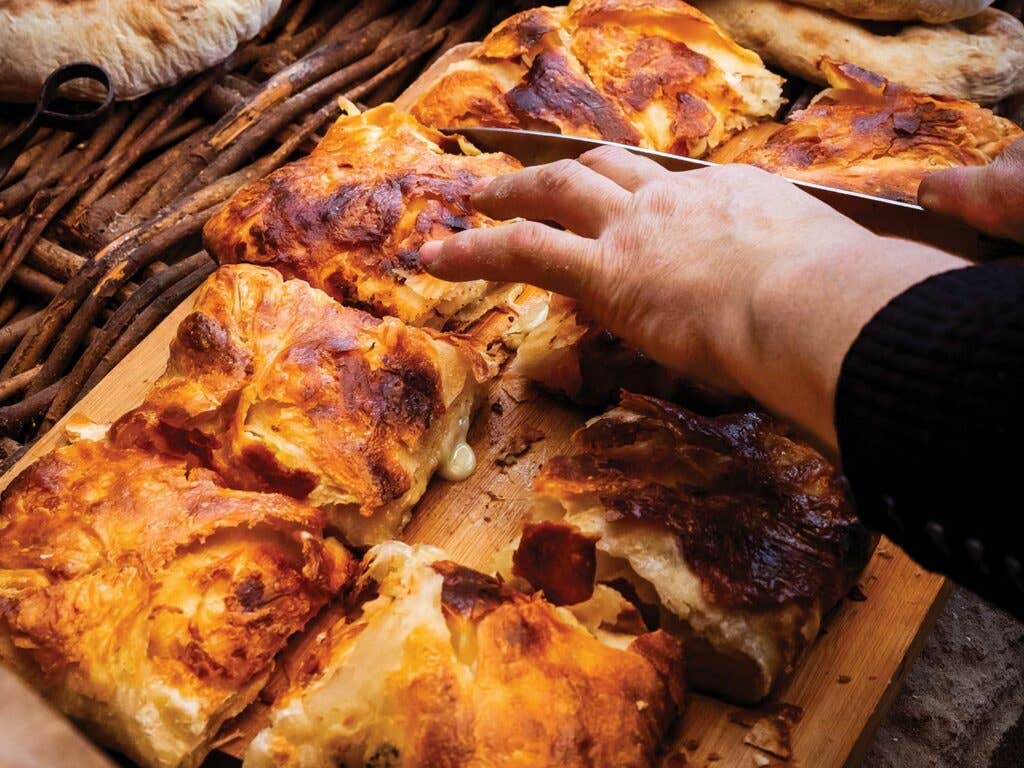
Another restaurant, Barbarestan, has begun to introduce to some regional dishes that are traditionally made with flavorful old-fashioned cheese, using a once-obscure cookbook from the late 19th century for inspiration. Owners Maka Jabuti and Zviadi Qurasbediani sat with us at their restaurant the following evening as a server drizzled melted dambal khacho at a tableside cart. The cheese, which is infused with tarragon, had been discovered by Mikadze-Chikvaidze in a village in the northeastern region of Mtiuleti just a few years ago. It was thick and creamy, with a slightly sour taste. The sharpness of the tarragon emerged on the palate after a few seconds. "Our aim is to present Georgian cuisine in an old way," Qurasbediani said. "So Ana's cheeses are very congruent with our menu and philosophy. This dish is old, but 99 percent of Georgians don't know it, so in this way, it's like a new dish."
“Hopefully not for long,” Mikadze-Chikvaidze added. “The world is finding out about our wine, and soon enough, Georgia will be known as a great cheese nation too. I’m certain of it.”
Keep Reading
Continue to Next Story




